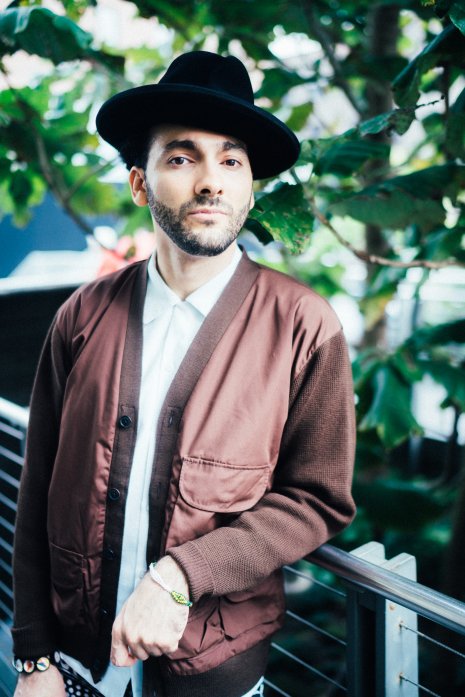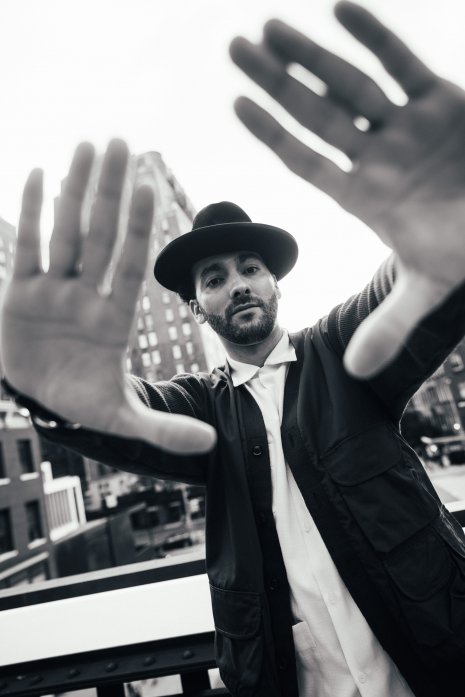In David's words...
I was introduced to a life in music at birth. Both my parents are musicians. They instilled in me reverence for education through culture, and by example, they showed me that the arts are indispensable for our growth and fulfillment as human beings - a way of life that also has the potential to foster respect, tolerance and harmony.
I intend on exercising my creativity for as long as I am able.
My musical career has been dedicated to investigating and furthering the concept of developing original music, stemming out of different folkloric traditions, and with improvisation at the center of it all.
My diverse experiences as a pianist in various bands have informed my collaborative approach to music-making. I try to strike a balance between having a clear formal vision for compositions, which emerge from organizing and processing raw materials and information, as well as remaining open and receptive to the ideas and approaches introduced by the musicians I work with.
My process as an artist is fundamentally tied to studying traditional folkloric information - in order to compose music that bears a meaningful relationship to my cultural lineages - as well as analyzing many musical devices created by the great composers of the past. These devices stem from all parameters of music, including rhythm, melody, harmony, orchestration, form, etc. By researching and processing this information through new original artistic creations, I feel I am also contributing to preserving and furthering our lineage and collective memory.
My work includes pieces for solo piano; various types of piano trios (the concept of piano with rhythm section that can include any number or kinds of percussion and bass); pieces for synthesizers, samplers, drum machines and other electronic devices; orchestral ensembles; traditional Cuban music ensembles that can include any family of the Cuban percussion instruments; big bands; small acoustic or electro – acoustic ensembles; chamber music for different combinations of orchestral instruments; music that features spoken word, ritual chanting or interdisciplinary interaction (specifically visual arts); etc.
In 2018 I became the recipient of a research travel grant from the Díaz-Ayala Cuban and Latin American Popular Music Collection at Florida International University Library, where I conducted research that allowed me to deepen my connection to a wide range of archival material. This provided the groundwork for what would prove to be a major milestone in my career, the realization of my album Igbo Alakorin (The Singer's Grove I & II). This recording featured elder statesman of the music from the community where I grew up in Santiago de Cuba, and it was recorded at the Santiago studio where I would attend my father's sessions as a child, and where I participated in some of my first professional recordings.
I feel that this work is increasingly urgent as our society continues to suffer a rapid transformation while traditions of the past recede. I also consider this type of research to be vital in developing the kinds of new original works that I strive to create.
I am also very interested in the close relationship between music and other artistic forms of expression. Over the years, I have experimented with visual artists that have created visual components to my compositions, or I have created the visual elements myself.
For example, with my album, Continuum, I began more directly to investigate the musically generative potential of symbols. For this recording project, the outstanding Cuban painter and sculptor Alberto Lescay produced a series of pieces parallel to the music that we recorded on the album. This collection of paintings was inspired by a field trip to rural communities around Santiago de Cuba.
Likewise, my own drawings became the basis of a short video collaboration with the artist Rómulo Sans, entitled “Ideogramas.” These drawings were inspired by ideographic script systems of symbols, devised by indigenous cultures and present in Cuban spiritual practices.
With this complement to my musical creations, I aim to embody both musical and extra musical ideas implicit in my work. Although abstract and perhaps seemingly opaque at first glance, the visual representations of my work in general are a manifestation of the state of my continuing explorations. In my creative practice, I often try to intersect music composition, music performance and visual art.
I hope to continue in this challenging, exciting direction in my music, while at the same time expanding my knowledge in other domains of creative work.
Mentors have been key in my development as an artist. Roman Díaz, a master percussionist and repository of the sacred Congo, Yoruba and Carabali lineages that survived in Cuba, has been an important source and collaborator for my work. His involvement in my musical development in the last decade has allowed me to connect directly with many folkloric musical lineages out of Cuba. To say that his contribution has been an integral part of my work since my arrival in New York would be an understatement.
I am also grateful for the examples of major Black American composers/instrumentalists such as Henry Threadgill and Muhal Richard Abrams, each of whom have provided guidance in my development and whose compositions for large ensembles have expanded my understanding of what is musically possible in these contexts. They inspired my interest in further developing my compositional skills, which explores Western classical instrumentation, Afro Cuban folkloric percussion instruments and their inherent language, as well as improvisation as it relates to the so called "jazz" continuum as well as other musical systems out of Cuba.
My goal is to keep developing a kind of music that has ancient and contemporary qualities at once: a new type of original, modern, experimental, improvisational, folkloric music. I will keep developing my expanding catalogue with compositions that will eventually be featured in upcoming releases, encompassing chamber, symphonic and electronic music for hybrid contexts - rooted in elements of both improvisational and traditional/ folkloric music.



